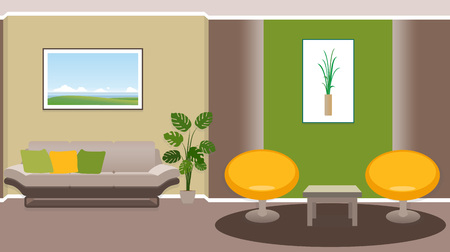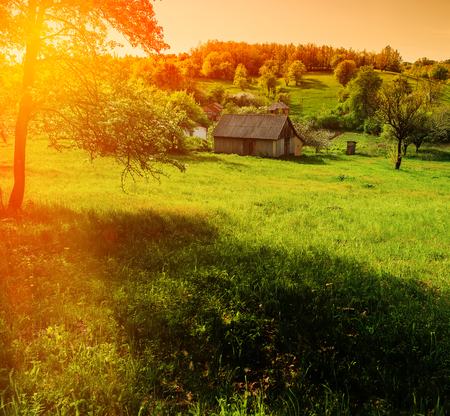Introduction to British Countryside Inspiration
There is something undeniably enchanting about the British countryside, with its gently rolling hills, patchwork fields bordered by ancient hedgerows, and wildflower meadows that burst into colour with each new season. These timeless landscapes have inspired countless artists, poets, and designers over the years, offering a rich palette of earthy and botanical hues that evoke a sense of tranquillity and natural beauty. From the deep greens of mossy woodlands to the soft taupes of sun-baked paths and the delicate blushes of springtime blooms, the British countryside provides an endless source of inspiration for those looking to bring a touch of nature indoors. Embracing these colours not only celebrates the unique character of rural Britain but also fosters a connection to the environment, creating spaces that feel both grounded and uplifting.
Key Earthy and Botanical Colour Schemes
When it comes to bringing the serenity of the British countryside into your home, choosing the right colour palette is essential. Classic country-inspired schemes draw from the subtle beauty of nature, creating spaces that feel both timeless and relaxing. The following guide highlights some of the most beloved earthy and botanical colour combinations found across rural Britain, offering inspiration for anyone seeking a calming and inviting atmosphere.
Sage Greens
Sage green is a staple in British country interiors, reflecting the rolling hills and lush foliage found throughout the countryside. This gentle hue works well as a wall colour or as an accent through soft furnishings and accessories. Pairing sage with natural textures such as wood or stone enhances its connection to nature.
Soft Browns & Warm Neutrals
Inspired by earth, bark, and traditional stone cottages, soft browns and warm neutrals bring a sense of grounding to any room. These shades are perfect for larger surfaces like floors or cabinetry, providing a versatile backdrop that complements both botanical prints and classic florals.
Muted Florals
Florals are synonymous with British country style, but instead of bold or vibrant colours, opt for muted tones like dusty rose, lavender, or pale blue. These shades evoke the feeling of wildflowers in bloom without overpowering your space. Use them in upholstery, curtains, or even wallpaper for a gentle nod to traditional English gardens.
Popular British Countryside Colour Combinations
| Colour Scheme | Description | Best Used For |
|---|---|---|
| Sage Green & Cream | Fresh yet understated; brings a breath of nature indoors. | Kitchens, living rooms, bedrooms |
| Soft Brown & Dusty Rose | Earthy warmth balanced with floral softness. | Lounge areas, reading nooks |
| Muted Blue & Warm Grey | A calming combination reminiscent of misty mornings. | Bathrooms, bedrooms |
| Olive Green & Pale Yellow | A sunlit garden feel with natural depth. | Dining spaces, conservatories |
Practical Tips for Using Country Colour Schemes at Home
– Always test paint samples in different lighting conditions.
– Balance earthy tones with plenty of natural light.
– Layer botanical hues through textiles and accessories for added depth.
– Mix matte finishes for a more rustic look.
– Incorporate recycled or sustainable materials where possible to enhance authenticity and energy efficiency.

3. Integrating Countryside Colours into Everyday Spaces
Bringing the calming influence of the British countryside into your home is both rewarding and practical. With a thoughtful approach, you can infuse earthy and botanical colour schemes into your living spaces while keeping energy efficiency and long-term maintenance in mind.
Living Rooms: Warmth and Tranquility
Start by choosing muted greens, soft browns, and gentle creams for your walls or larger furniture pieces. These shades echo woodland walks and rolling meadows, creating a restful atmosphere. Opt for sustainable paints with low VOCs to ensure good air quality and minimal environmental impact. Layer textures with woollen throws, linen cushions, and wooden accents to add depth without overwhelming the space. To enhance natural light and reduce reliance on artificial lighting, use lighter hues near windows and arrange mirrors strategically to reflect sunlight throughout the room.
Kitchens: Freshness Meets Functionality
In the kitchen, sage green cabinetry or terracotta tiles can evoke herb gardens and rustic farmhouses. Choose durable, easy-to-clean finishes that stand up to daily wear—think quartz worktops or ceramic splashbacks in nature-inspired colours. Incorporate energy-efficient LED lighting under cabinets and above work areas to brighten the space while saving on bills. For a finishing touch, display potted herbs on windowsills or shelves; not only do they bring greenery indoors, but they also offer fresh ingredients at your fingertips.
Bedrooms: Calm Retreats
Create a soothing sanctuary by layering soft botanical hues such as dusky blues, heather purples, or sandy taupes. Use washable, breathable textiles like organic cotton bedding and woollen rugs for comfort and easy upkeep. To maximise thermal efficiency, invest in lined curtains or blinds in natural shades—these help regulate temperature year-round and cut down on heating costs. Add subtle floral patterns through cushions or artwork for a nod to classic British garden style without overwhelming the senses.
Long-Term Upkeep Tips
Choose high-quality paints and finishes that are designed for longevity, reducing the need for frequent redecorating. When selecting furniture and fabrics, prioritise stain-resistant or machine-washable options to keep your spaces looking fresh with minimal effort. Finally, regular dusting of plants and natural materials helps maintain indoor air quality—a small but vital step in caring for your countryside-inspired home.
4. Sourcing Sustainable and Local Paints & Materials
Bringing the beauty of the British countryside into your home isn’t just about colours—it’s also about making mindful choices when it comes to paints and materials. Opting for sustainable, locally sourced products not only supports UK businesses but also helps reduce your carbon footprint, aligning perfectly with an eco-friendly lifestyle.
Choosing Eco-Friendly Paints
When selecting paints, look out for brands that offer low or zero VOC (Volatile Organic Compounds) options. These are less harmful to both your health and the environment, as they emit fewer pollutants during application and drying. Many UK paint manufacturers now offer ranges inspired by natural landscapes, using plant-based pigments and recycled packaging. Here’s a quick comparison of popular UK eco-friendly paint brands:
| Brand | Main Features | UK Made | Sustainability Focus |
|---|---|---|---|
| Lick | Low VOC, water-based, recyclable tins | Yes | Carbon-neutral deliveries, eco packaging |
| Eico | Zero VOC, natural pigments, odourless | No (Iceland/Sweden) | Renewable energy production |
| Earthborn | Clay-based, breathable, child-safe | Yes | Fully compostable packaging options |
| Lakeland Paints | Chemical-free, vegan-friendly formulas | Yes | 100% organic ingredients |
Sourcing Local Materials for a True Countryside Feel
For surfaces and decorative accents, consider reclaimed wood from local salvage yards, stone from nearby quarries, or textiles made by British artisans. This not only reduces transportation emissions but also gives your space a uniquely regional character. Supporting local makers—from ceramicists to weavers—brings authentic textures into your home while sustaining traditional crafts.
Where to Find Sustainable Materials in the UK:
- Salvage and reclamation yards: Perfect for finding period timber beams or rustic floorboards.
- Boutique hardware shops: Often stock eco-friendly finishes and waxes.
- Farmers’ markets and craft fairs: Great places to discover handwoven linens and pottery.
- Online UK marketplaces: Websites like Etsy UK or Folksy feature many independent British makers specialising in sustainable decor items.
Sustainable Choices Make a Difference
Selecting paints and materials with care ensures your earthy or botanical scheme is as gentle on the planet as it is beautiful. By championing local producers and eco-conscious brands, you help preserve the very countryside that inspires your interiors—creating a home that is both welcoming and responsible.
5. Classic British Decor Accents and Textures
One of the most charming aspects of embracing earthy and botanical colour schemes inspired by the British countryside is the opportunity to layer in classic British decor accents and textures. These elements not only add depth and warmth but also evoke a sense of timeless comfort that is synonymous with rural homes across the UK.
Layering British-Made Textiles
Begin by incorporating textiles made from locally sourced materials. Wool throws, particularly those woven in Scotland or Wales, offer both insulation and an authentic touch. Opt for natural hues—moss green, heather purple, or warm chestnut—to echo the tones found in British meadows and woodlands. Linen cushions, especially in muted botanical prints or soft earthy shades, add a relaxed, breathable layer that feels fresh yet grounded.
Embracing Natural Materials
Complement your textile choices with natural materials such as wood and stone. Wooden furniture crafted from oak or ash brings a rustic yet refined look that pairs beautifully with botanical palettes. Consider exposed beams, reclaimed wooden coffee tables, or even simple wooden picture frames featuring local flora artwork. To add tactile interest, woven baskets and jute rugs can be used for storage and floor coverings.
Mixing Patterns and Textures Thoughtfully
The key to achieving a truly British countryside feel lies in mixing patterns and textures thoughtfully. Pair plaid wool blankets with delicate floral linen cushions for visual contrast while maintaining harmony through a shared earthy palette. Don’t shy away from layering—drape throws over armchairs or pile up cushions on window seats to create inviting nooks that celebrate comfort and nature-inspired style.
By selecting British-made textiles and natural materials, you not only support local craftsmanship but also cultivate a home environment that is welcoming, sustainable, and deeply connected to the beauty of the British outdoors.
6. Seasonal Adjustments and Maintenance
Keeping your home in tune with the British countryside’s rhythms means more than just choosing the right earthy or botanical colour palette—it’s about simple, regular upkeep and seasonal decorating tweaks. As the seasons shift, so do the needs of your living spaces. In spring, take advantage of longer daylight hours by cleaning windows and swapping heavier curtains for lighter, natural fabrics that let in soft sunlight, highlighting those sage greens and soft browns. In summer, check for draughts and use breathable materials like linen or cotton in cushions and throws, creating a cool retreat even on warmer days.
Come autumn, it’s time to prepare for the chill by inspecting insulation around doors and windows—think about adding warm ochre or deep moss accessories to echo the turning leaves outside. Winter is perfect for layering: add woollen blankets in muted woodland tones and keep heating efficient by bleeding radiators and ensuring thermostats work properly. Regularly dusting natural wood furniture and checking ventilation helps prevent mould during damp spells, common in many parts of the UK.
Little touches make all the difference year-round. Rotate indoor plants according to light changes through each season, ensuring vibrant greenery complements your chosen palette while purifying the air naturally. Swap out decorative accessories—a vase of wildflowers in spring, pine cones or holly branches in winter—to reflect what’s happening outdoors. With a few mindful adjustments each season, you’ll keep your home looking fresh, staying safe, and running energy efficiently, all while celebrating the beauty of Britain’s countryside indoors.

